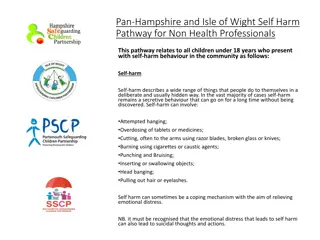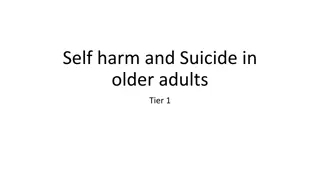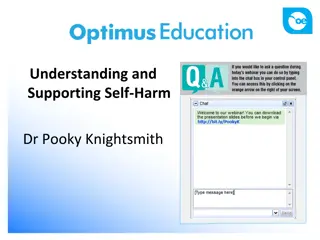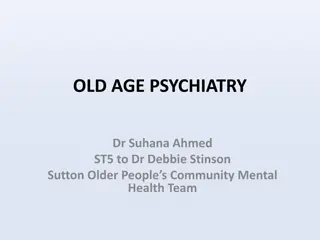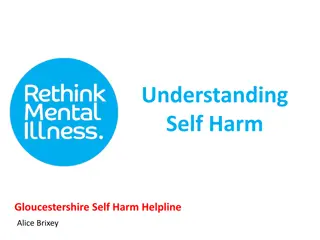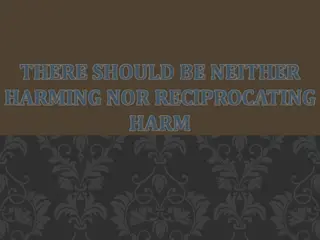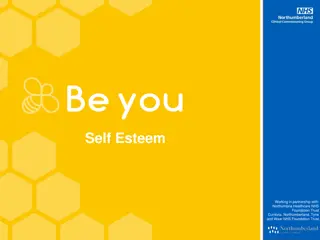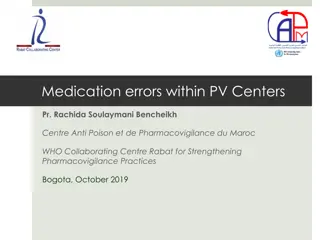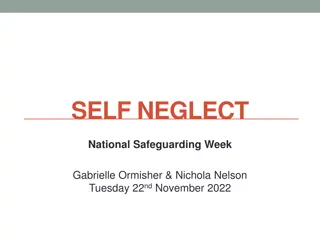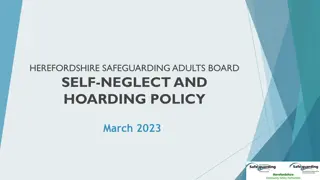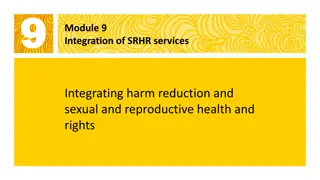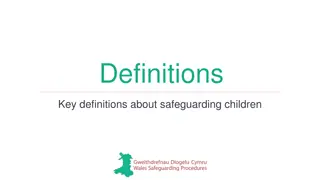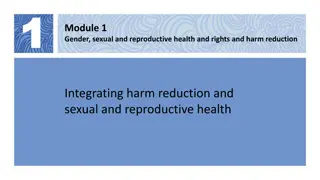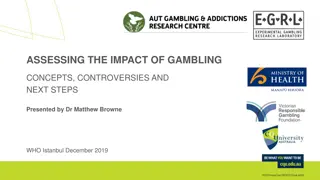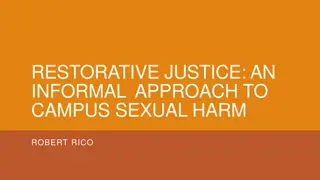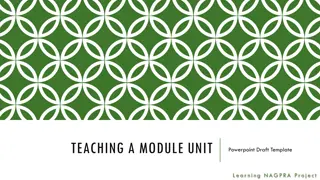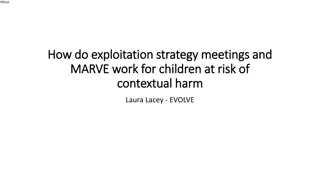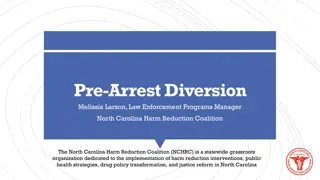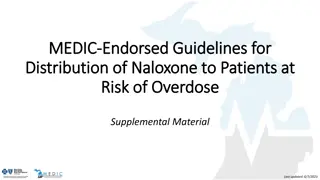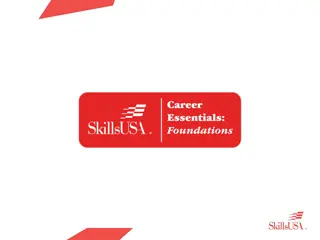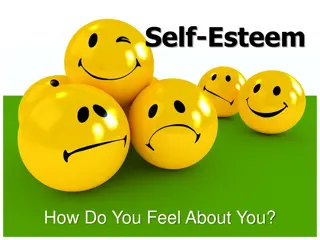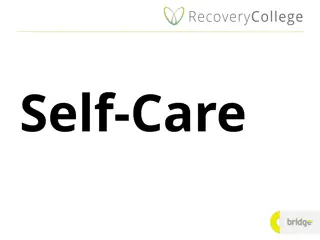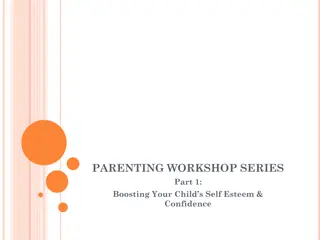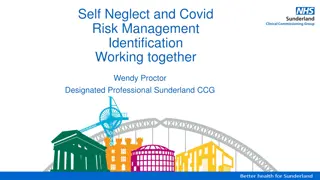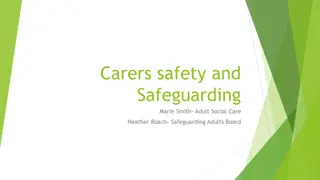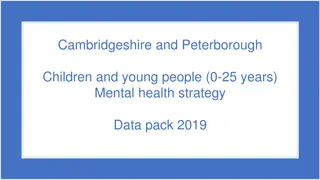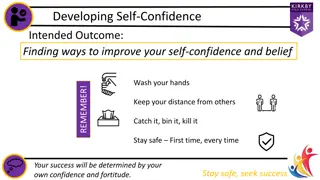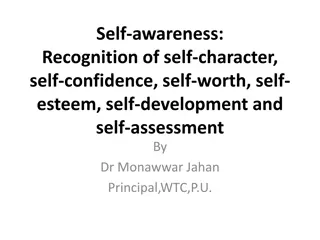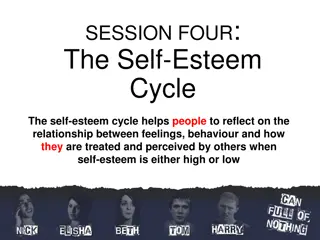Self-Harm Trends and Factors in Sutton
The data presented in the slides highlight concerning trends in self-harm rates, particularly among young girls, in Sutton. Key issues such as peer pressure, suicidal thoughts, exam pressure, and mental health challenges are identified. Factors contributing to high self-harm rates are discussed, including barriers to accessing community services and social pressures. Strategies for improvement, such as increased capacity in commissioning investment and better access to mental health services, are outlined to address these issues in the community.
Download Presentation

Please find below an Image/Link to download the presentation.
The content on the website is provided AS IS for your information and personal use only. It may not be sold, licensed, or shared on other websites without obtaining consent from the author. Download presentation by click this link. If you encounter any issues during the download, it is possible that the publisher has removed the file from their server.
E N D
Presentation Transcript
Self Harm in Sutton Dr Laura Stokes, Consultant Clinical Psychologist, SWL St Georges James Holden Commissioning Manager, Sutton CCG, (Slide Development) 1
Self Harm Trend Since 2001, higher rates of self harm in girls than boys 37.4 per 10000 compared with 12.3 in boys More than a fifth of 14yo girls in the UK have self harmed Sutton: Has a population of approximately 205,900 people, a quarter are aged 19 years or younger. The population of children and young people (aged 0 to 19 years) is expected to increase by 10%. This increase is higher than London (7%) and England (5%). 2
Key issues in Sutton Domestic Violence 1% Cyber Bullying 2% Pressure to have a sexual relationship 3% Bullying 5% Peer pressure (outside school/college) 5% 1710 Personal use of substances 6% Self Harm 6% Discrimination 8% Peer pressure (school/college) 10% 943 Caring responsibility for others 11% Suicidal Thoughts 11% 1013 Social media pressure/FOMO 12% Unhappiness due to death/loss 13% 276 159 Family/household money worries 14% Not being accepted 14% Relationship/Family Problems 16% Relationship/Friend Problems 17% Eating Problems 19% Feeling Lonely 25% Body image/Appearance 26% Sleep Problems 40% Exam Pressure 53% 0 500 1000 1500 2000 2500 Healthwatch Sutton Survey 3
Sutton Self Harm There is was high incidence of CYP attending A and E for self-harm in Sutton Hospital presentation as a result of self harm 15-19 year olds rate per 100,000 2017-18 600 500 400 300 200 100 0 Sutton London 4
Suggested factors The rate of presentation to A&E is not linked to the estimated rate of mental health issues in children and young people, so other factors must be involved. Suggested factors that may be determining the higher rate of presentation for self-harm in Sutton include: 1) Barriers real or perceived against usage of community services so that presentation is much later and in crisis 2) Differences in pathways and referrer perception of risk, for example, young people are directed towards hospital based services and admission rather than community services. 3) Social and educational pressures in the borough e.g grammar schools? 5
Improvements Increased capacity of SPA commissioning investment Promoted duty system accessible to schools / GPs Implemented Urgent 5 day appointment system Increased robustness of duty protocol for safeguarding Risk management via telephone book into urgent Increased access to services. Access rate for 18/19 of 38% ensuring more able to access CAMHS. 6
Self Harm Nurse Implemented as of 8th May 2018 Provide advice, assessment and treatment to the borough of Sutton. The role also consists of delivering training to social care, supervision to school nursing team and offering self-harm surgeries to schools. To offer treatment and intervention to young people and families Short term intervention, safety planning / emotion regulation 7
Feedback To really think about self harm with my young people and be more inquisitive and not be afraid to ask questions School Nurse I feel things would have been more of a struggle if we did not have this support in place I liked that (therapist name) listened to my problems and didn t judge on how I dealt with them. I was so grateful for this service it has made a difference and I m not sure what could of happened without it The unpacking of the cause and the effects gave me a better understanding of my toll in finding solutions 8
Self Harm Protocol The protocol is a MA strategic document, to strengthen partnership working when responding to self-harm. It relates to all professionals and volunteers working with children and young people (0 18). Aims to: Support agencies to manage self-harm as it arises; Improving the response on presentation, disclosure, or suspected signs of self-harm Assessing suicidal thoughts / knowing when to escalate Helpful to education colleagues 9
Achievements so far Transformation programme: self-referral counselling, Online self- referral counselling, drop in services. Planning for difficult times from the data: Manchester Report findings + peak referrals prior to exams. Identified exam stress as a major cause Multi agency working to create prevention leaflets with the voluntary sector distributed through high schools to all pupils Increased capacity of drop in services during exam time so young people could easily access services 10
Achievements so far A 40% decrease in children and young people presenting to A&E with self- harm in 17/18 compared to 16/17. 11
Future priorities Deliver an increased support offer to schools to support emotional resilience of pupils and promote mental health understanding of staff. Build on the reduction in the number of children attending hospital with incidents of self-harm with a continued target of 25% reduction from the baseline Deliver operating plan access target Increase capacity of the CBT pathway to decrease waiting times for this service Strengthen the transition pathway between CAMHS and adult services. 12
Prevention - Mental Health Support in Schools 13


